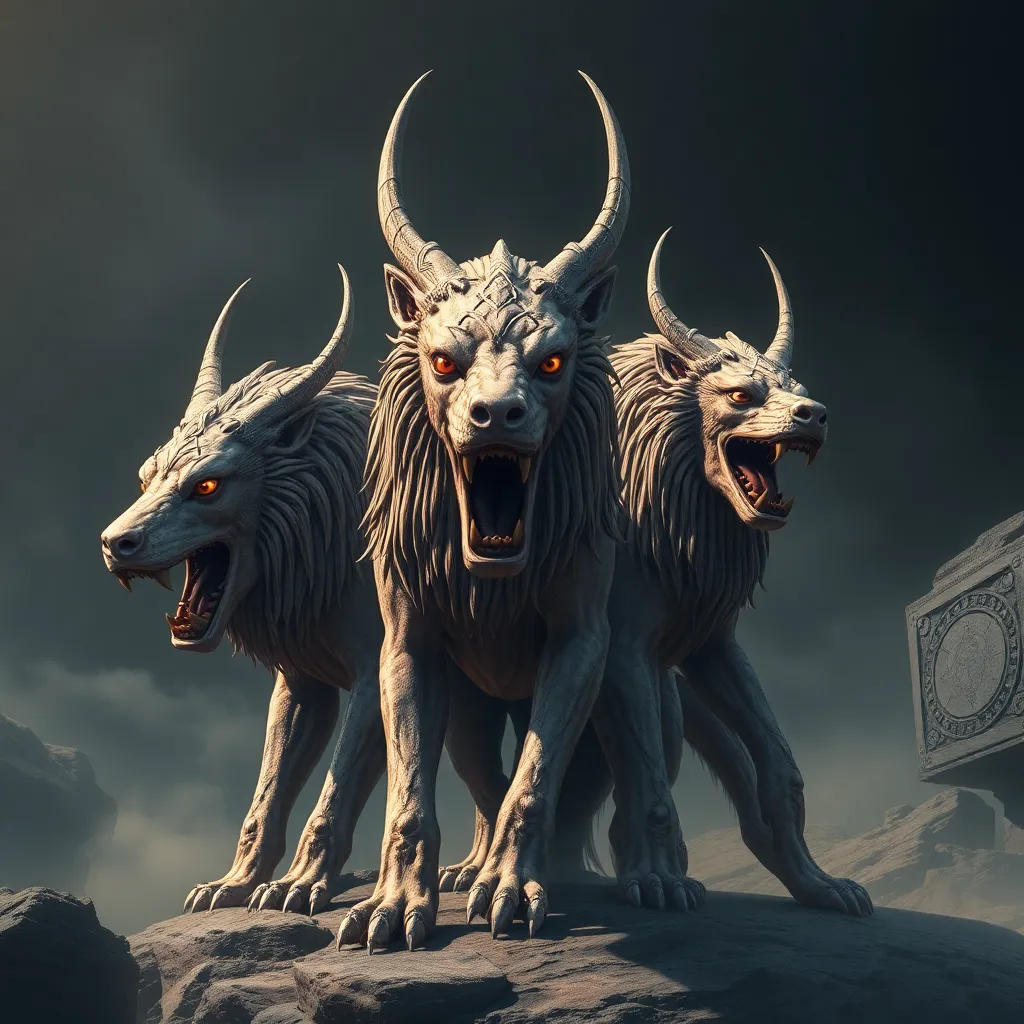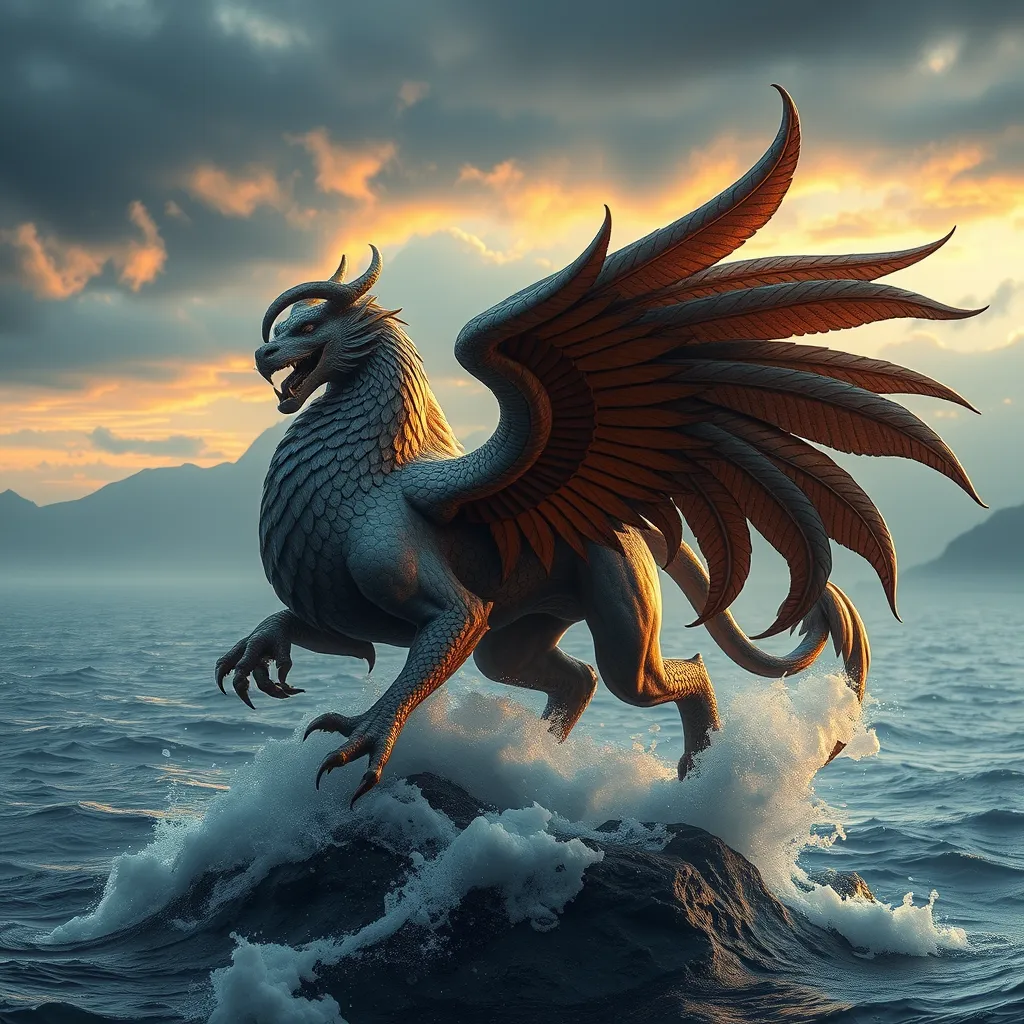Unlocking Cerberus’s Secrets: A Journey Through the History and Significance of the Myth
I. Introduction to Cerberus
Cerberus, often referred to as the “hound of Hades,” is one of the most recognizable figures in Greek mythology. This three-headed dog stands guard at the gates of the Underworld, preventing the dead from escaping and the living from entering without permission. As a hybrid creature, Cerberus embodies the themes of life, death, and the transition between the two realms, making him a significant figure in ancient lore.
The importance of Cerberus extends beyond his role as a guardian; he represents the complexities of the human condition, the inevitability of death, and the boundaries of the afterlife. This article aims to explore the origins, cultural representations, and enduring legacy of Cerberus, shedding light on why this mythological figure continues to captivate our imagination.
II. The Origins of Cerberus
The mythological roots of Cerberus are deeply entrenched in ancient Greek culture. According to various sources, he is the offspring of Echidna, a monstrous creature often described as the “mother of all monsters,” and Typhon, a fearsome giant and the personification of volcanic forces. This lineage sets the stage for Cerberus’s fearsome reputation as a guardian of the underworld.
In early references, including Homer’s “Iliad” and Hesiod’s “Theogony,” Cerberus is introduced as a formidable creature with multiple heads and a serpentine tail. His description varies slightly across different texts, but the central theme of his role as the guardian of the Underworld remains consistent.
III. Cerberus in Greek Mythology
Cerberus is primarily known for his role as the guardian of the Underworld, a position that is both crucial and symbolic. He ensures that the souls of the deceased remain in the realm of Hades, highlighting the concept of mortality and the permanence of death.
One of the most notable myths featuring Cerberus is Heracles’s 12th Labor, where the hero is tasked with capturing the beast alive and bringing him to the surface. This myth not only showcases Cerberus’s formidable nature but also serves as a metaphor for the challenges that individuals face in confronting their fears and mortality.
- Guardianship: Cerberus prevents the dead from escaping.
- Symbol of Fear: His monstrous form represents the fear of death.
- Heroic Confrontation: Heracles’s labor signifies the struggle against the inevitable.
The symbolism of Cerberus in these narratives emphasizes the duality of his nature: he is both a protector and a fearsome creature, illustrating the complexities of life and death in Greek mythology.
IV. Cultural Representations of Cerberus
Throughout history, Cerberus has been depicted in various art forms, ranging from ancient pottery to modern films. His image is often used to evoke themes of fear, power, and the supernatural.
In literature and poetry, Cerberus has been referenced by numerous authors, including Dante Alighieri, who features him in “The Divine Comedy.” This representation highlights the creature’s role as a guardian of the damned, reinforcing his significance in literary traditions.
In modern media, Cerberus has found his way into film, video games, and literature, often serving as a symbol of horror or fantasy. His iconic three-headed figure continues to inspire creativity and fascination, allowing new generations to explore the depths of mythological storytelling.
V. The Symbolism and Interpretation of Cerberus
Cerberus’s symbolism extends beyond his physical presence. He represents the boundaries between life and death, acting as a threshold that souls must cross. This boundary is crucial in understanding human fears and the notion of the afterlife.
Moreover, Cerberus embodies the duality of fear and protection. While he instills fear in the living, he also serves to protect the dead from the chaos of the living world. This complex relationship invites psychological interpretations, suggesting that Cerberus represents our innermost fears regarding mortality and the unknown.
- Boundary Representation: Cerberus as a threshold between realms.
- Fear and Protection: The dual nature of guarding the afterlife.
- Psychological Interpretation: Reflection of human fears and the acceptance of death.
VI. Cerberus in Comparative Mythology
Examining Cerberus within the context of comparative mythology reveals similar guardian figures in various cultures. For instance, the Egyptian god Anubis, who oversees the afterlife, shares thematic parallels with Cerberus, emphasizing the significance of guardianship at the threshold of death.
Additionally, in Norse mythology, the giant wolf Fenrir serves as another representation of a fearsome guardian that embodies chaos and destruction. These figures illustrate a common human concern with death and the afterlife, highlighting cross-cultural themes that transcend geographic boundaries.
VII. Cerberus in Modern Society
In contemporary society, Cerberus continues to resonate through literature, film, and video games. His iconic status as a mythological creature allows for diverse interpretations and representations across various genres.
Moreover, Cerberus has become a symbol in movements related to horror and fantasy, often being depicted as a formidable antagonist or a powerful ally. This ongoing fascination with mythological beings reflects humanity’s enduring interest in exploring the unknown and confronting our fears.
VIII. Conclusion
In summary, Cerberus stands as a significant figure in both ancient and modern contexts, representing the complexities of life, death, and the fears associated with mortality. His historical and cultural significance is evident in the various myths, artistic representations, and psychological interpretations that have emerged over the centuries.
As we reflect on the enduring legacy of Cerberus, it becomes clear that this mythological figure serves as a powerful reminder of our relationship with death and the unknown. The invitation to explore further into the realm of mythological figures continues to be relevant, as these stories provide insights into the human experience and the fears that bind us all.



